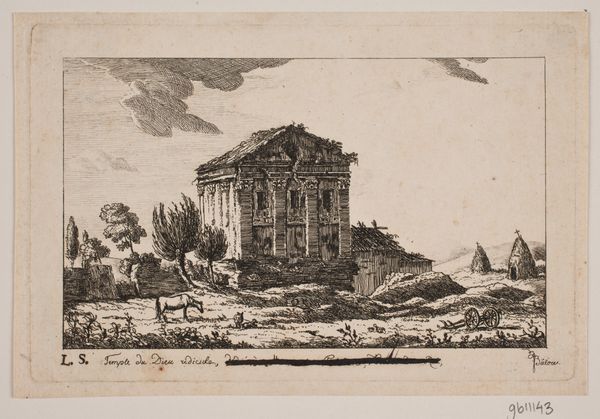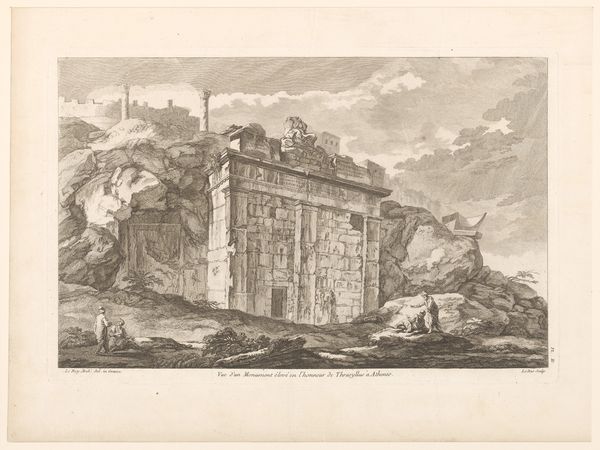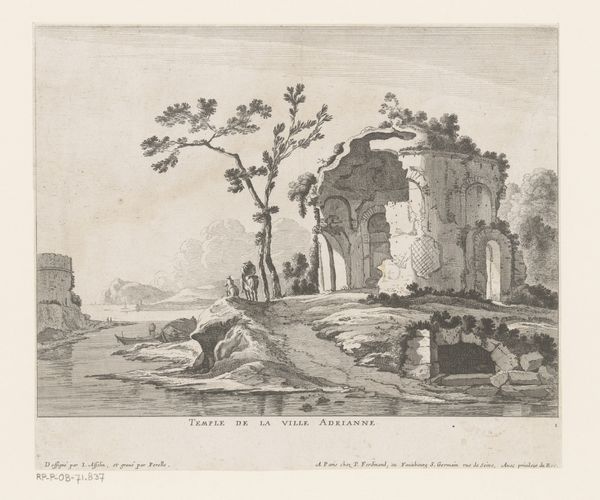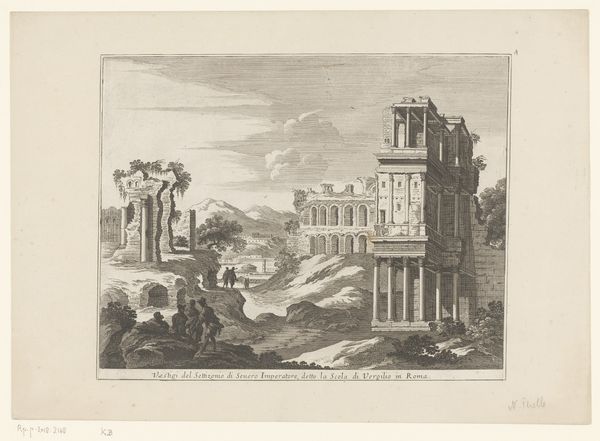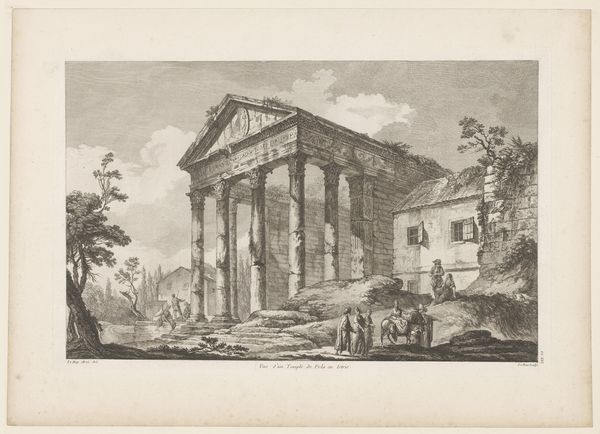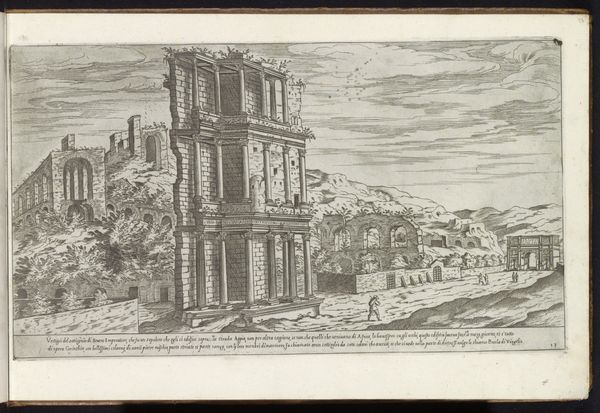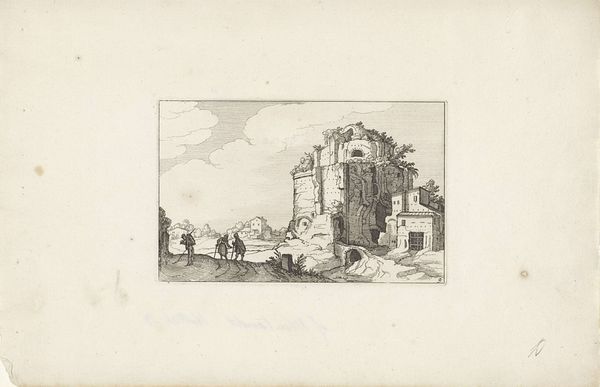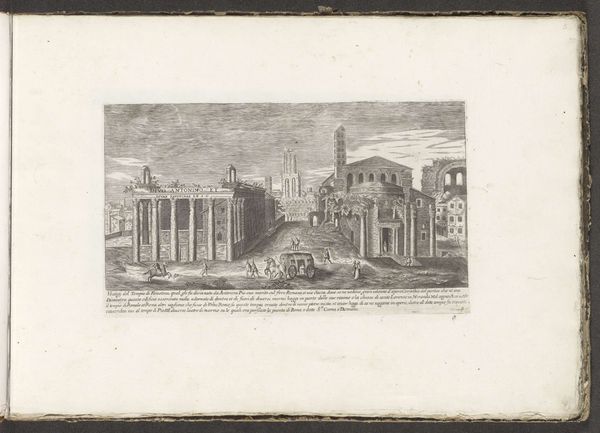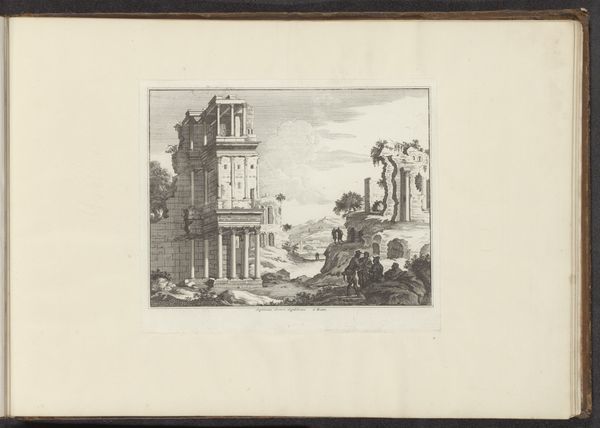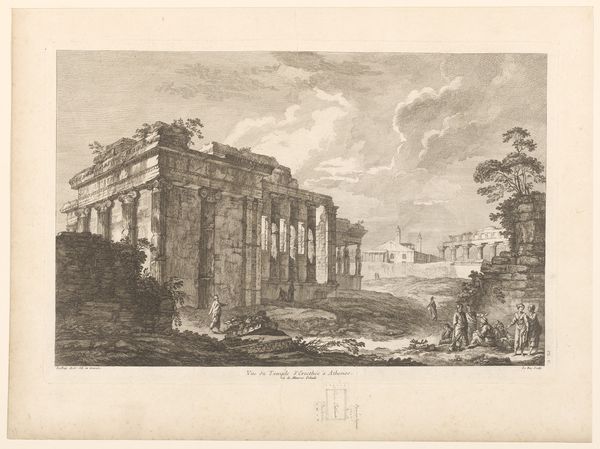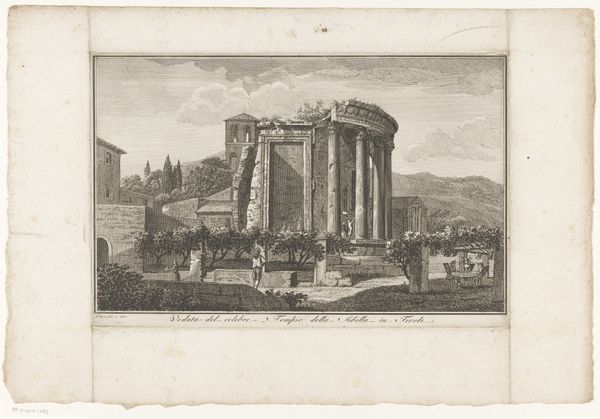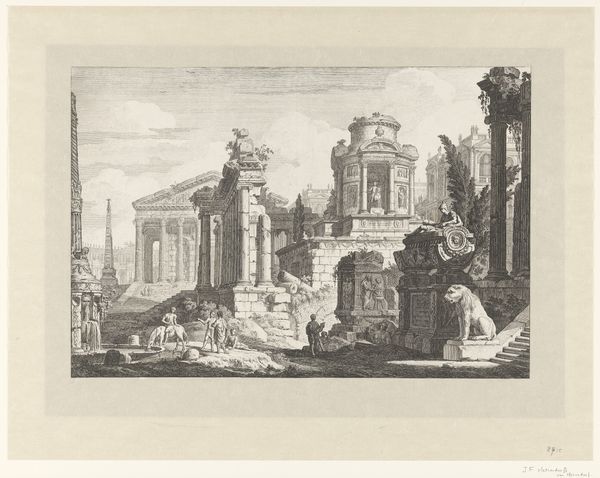
drawing, print, etching, engraving
#
drawing
#
neoclacissism
# print
#
etching
#
landscape
#
etching
#
history-painting
#
engraving
Dimensions: 100 mm (height) x 154 mm (width) (plademaal)
Editor: So, this is Johan Bulow's "Antik bygning," made sometime between 1751 and 1828. It’s an etching and engraving. I’m struck by how it depicts this crumbling, classical building alongside elements of everyday life, like the horse and cart. What do you see in this piece? Curator: I see the convergence of Neoclassical ideals and the realities of their application, and its eventual deconstruction. The "antik bygning", or antique building, signifies a connection to a classical past, revered during the Neoclassical movement, right? But the ruinous state points to a very different perspective, doesn’t it? Editor: It does. Almost a criticism? Curator: Perhaps not a direct critique, but a reflection of societal attitudes. Etchings and engravings, like this one, were vital in disseminating architectural ideas and influencing taste, they reached a wide public audience. This also places Bulow firmly in the public role as an educator, not just an artist. Editor: So the medium itself influenced how the artwork was viewed and interpreted. What about the composition? Does that say something about the politics of imagery? Curator: Definitely. Notice how the building is the focal point, but not glorified. The crumbling facade becomes almost a metaphor for societal decay. Also, I wonder how the reference to "Monsur Cramer, entre de Rei" impacts it as well, by acknowledging someone closely affiliated with the King. Think of who had access to classical education, whose ideals are being deconstructed... What do you think about it? Editor: That it suggests a questioning of the very foundations upon which that society and its power were built? A subversion within the landscape... Fascinating! I had not considered it that way at first. Curator: And that's the beauty of art history; it’s about understanding the forces shaping the production and reception, the intention behind, as well as the effect of such choices. Editor: It completely changes my initial read. I’m going to look at etchings differently now.
Comments
No comments
Be the first to comment and join the conversation on the ultimate creative platform.
